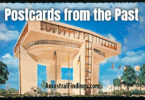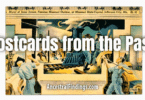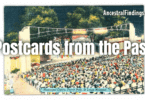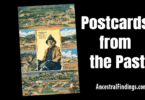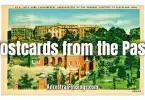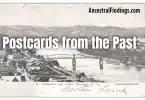Cincinnati has always been a city that valued its public spaces, and one of its most fascinating historic gathering places was Chester Park. While the postcard image gives us only a glimpse of a statue in a pavilion with the clubhouse in the background, the story of Chester Park goes much deeper. For decades, it was one of Cincinnati’s favorite spots for leisure, recreation, and community life. To understand its history is to open a window into how people in the late 19th and early 20th centuries lived, worked, and played.
The Birth of Chester Park
Chester Park was established in the 1870s, during a period of explosive growth in Cincinnati. The city had become a hub of industry, trade, and immigration. As families flocked to Cincinnati for work, city leaders and entrepreneurs realized the importance of creating spaces where people could escape from crowded neighborhoods and the smoke of the factories. Parks were not only beautiful, but they also reflected civic pride and offered healthier surroundings for the public.
Chester Park was designed with this in mind. It wasn’t just a simple green lawn—it was a planned space filled with gardens, statues, fountains, and tree-lined walkways. It was meant to be a place where families could stroll together, young couples could walk arm in arm, and civic organizations could hold meetings or events in elegant surroundings. The grand clubhouse, seen in this postcard, became a centerpiece for gatherings, dances, and social events.
A Place for Music, Events, and Society
One of Chester Park’s biggest draws was its music. Band concerts and orchestral performances were a regular part of life there, drawing crowds who wanted entertainment in a beautiful setting. Families packed picnic baskets and spent entire afternoons enjoying music, games, and the fresh air. Chester Park became known as one of the city’s social hubs, where people could mingle and be seen.
The clubhouse hosted everything from weddings to civic meetings. It was a place where Cincinnati’s growing middle class could celebrate life events in style. The grounds were also used for fairs and expositions, which highlighted everything from new inventions to local produce and crafts. In an age before television or radio, parks like Chester offered live, in-person entertainment that connected people to one another.
Transformation into an Amusement Park
By the early 20th century, tastes in recreation were beginning to change. People wanted more excitement, and Chester Park adapted. What began as a refined garden park soon expanded into something closer to an amusement park. Rides were added, including roller coasters and mechanical attractions that thrilled younger generations. The park became a destination not only for leisurely walks but for whole families seeking a day of fun.
The arrival of streetcars in Cincinnati made it easier for people across the city to visit. For just a few cents, families could ride directly to Chester Park, spend the day enjoying rides and attractions, and return home in the evening. This accessibility helped cement Chester Park’s place as one of the most popular spots in Cincinnati.
The Decline of Chester Park
Despite its success, Chester Park eventually fell victim to the same forces that closed many early amusement and pleasure parks. The rise of large-scale amusement parks, like Coney Island on the banks of the Ohio River, gave families more attractions to choose from. Movie theaters, vaudeville shows, and later radio and television changed the way people spent their leisure time. By the mid-20th century, Chester Park’s popularity had faded, and its grounds were repurposed for other uses.
Today, little remains of Chester Park. The statue and clubhouse captured in this postcard are long gone, but they remind us of a time when parks were essential to city life. They were more than places to relax—they were spaces where a growing city expressed its values, celebrated community, and created shared memories.
Why Chester Park Matters Today
For family historians, places like Chester Park are important to remember. They remind us of how our ancestors spent their free time. If your family lived in Cincinnati in the late 1800s or early 1900s, there’s a good chance they visited Chester Park, whether for a Sunday stroll, a wedding reception, or a summer concert. Parks like this tell us not just where our ancestors lived, but how they lived.
The postcard is more than a simple illustration—it’s a surviving record of a place that meant so much to so many. It shows us a lost chapter in Cincinnati’s history, one that deserves to be remembered. Even though Chester Park no longer exists, its story is part of the larger story of Cincinnati, reflecting the city’s ambition, its love of beauty, and its commitment to providing places where people could come together.
Chester Park may have vanished, but in images like this, it still lives on—as a reminder of the joys, gatherings, and moments that shaped a city and the lives of the people who called it home.
And if you’ve got a postcard of your own—maybe one that shows a long-gone amusement park, a neighborhood gathering place, or even a favorite picnic ground—I’d love to see it. Just click on the Contact link at AncestralFindings.com and ask for my mailing address. There’s always room for more history on the shelf, and I may feature some of your postcards on a future episode of the podcast.

